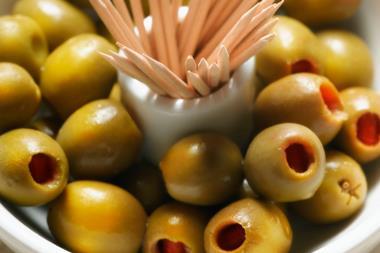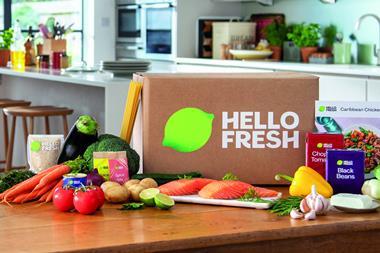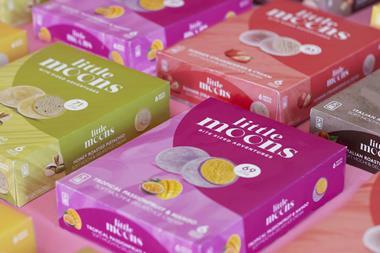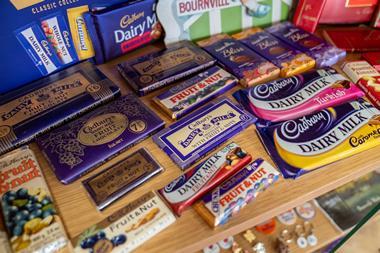Combining the French for “world” and an expression meant to evoke “delicious,” the name Mondelez was widely ridiculed when this Kraft spinoff was announced. But analysts have been kinder about the concept behind the split last month of the global snacks business - housing the likes of Cadbury, French biscuit maker LU and US cookie giant Nabisco - from the slower-growing, higher-margin north American ambient grocery conglomerate.
As a standalone business, Mondelez is already a $36bn powerhouse, global number one in biscuits, chocolate, and sugar confectionery and number two in coffee.
So what can Mondelez achieve that Kraft couldn’t pull off as a single entity? The split frees Mondelez to build its presence in developing markets, which make up 44% of its revenues. But European president Tim Cofer, with 20 years under his all-American belt, says even small growth in its existing European share - Europe accounted for 37% of its revenue last year and is growing three times faster than the market - can reap massive rewards for the new company. “Snacking in Europe is worth $335bn and we’re number one with a 3.5% share,” says Cofer. “If we grow our share just 1%, that equals a rise of $3.5bn in revenue.”
A key plank of its strategy involves capitalising on its ‘power’ brands, including Cadbury, Oreo and Milka, which account for 60% of Kraft’s snacking revenues and 100% of its growth. “We want to leverage the power of these brands like never before,” declares Cofer.
A case in point is the new combined Cadbury/Oreo bar, whose sales are soaring. This follows last year’s successful launch of Philadelphia cream cheese with Cadbury chocolate (Milka in Europe and the US). And last month saw the first of two Milka-inspired products hit the UK, with Crispello as Cadbury’s first countline in over 15 years. Backed by a £7m ad spend, it will be followed on shelf in January by Cadbury Egg ‘n’ Spoon, a version of a Milka line first launched 10 years ago.
Rationalising
With its focus on power brands, Cofer admits the new company is simultaneously looking to slash the scale of its product range and drive savings by consolidating suppliers. “We have too many SKUs and could benefit from simplifying our portfolio,” he says. A tour of a German Milka factory just across the border from the imposing new Mondelez Zurich HQ provides the proof, with the factory boss revealing it now produces 200 SKUs compared with 700 in 1990. “There is no benefit in having 15 brands of sugar when you can have one,” adds Cofer.
That’s not to say Mondelez intends to be safe, however. “Snacking is about much more than just crisps and a carbonated drink,” says Cofer, who bases much of his plans on MEU/NuVista research [2010/11] showing consumers snack three times a day on average across five different products.
New occasions
The categories in which Mondelez operates - coffee, chocolate, cream cheese, biscuits, gum and candy - represent 34% of snacking in Europe [ACNielsen/NuVista/Euromonitor 2010/2011] and Cofer believes much more can be done at point of sale to tap into frenetic modern lifestyles. It has already run trials with Tesco and other retailers across Europe with a scheme called Early Mornings, with biscuit brand Belvita at the fore of a series of in-store promotions, and is exploring opportunities for other meal occasions with retailers. “The single greatest point of exposure a consumer has with a brand is at the point of sale,” adds Cofer.
A tour of its Continental European operations might suggest Mondelez views the UK as a sales and marketing outpost. In fact, Mondelez employs 5,500 workers, similar to pre-Cadbury takeover days.
With new UK and Ireland boss Maurizio Brusadelli, another Kraft veteran, Cofer admits only two of the European board are ex-Cadbury: Ruslan Kinebas, president of cheese and grocery, and Andrew Gibson, head of HR, although global presidents of gum and candy (James Cali) and chocolate (Bharat Puri) are ex-Cadbury, while Trevor Bond, the most-high profile survivor of the Cadbury takeover, who once ran Cadbury’s UK operations, is Cofer’s equivalent for Central and Eastern Europe. And Mondelez is keen to point out that most of the UK management have Cadbury origins.
Back office closures in Cheltenham and Sheffield and the loss of 400 manufacturing jobs in Bristol have hit the headlines, but Cofer points to the £27m investment in R&D at Cadbury’s historic Bournville home and a global research centre in Reading as proof the Cadbury heritage is safe, and that Mondelez remains committed to the UK. “Dairy Milk has record high market share,” he says. “The British consumer is voting on what they think of our takeover with their pounds.”
Talking of pounds, protests over Cadbury’s Olympics sponsorship caused only limited murmors, but Mondelez has work to do to convince critics it’s not contributing to obesity. Key to its strategy is the fact more than 50% of Brits regularly skip breakfast by fuelling them with Belvita biscuits.
Research by The Grocer shows Belvita comes loaded with more sat fat and less fibre than a Hobnob (The Grocer, 20 October). But with 10 nutritionists at its biscuit research in Saclay, Mondelez stresses their cereal content is on average 62% (and up to 70%), of which between 26% to 40% is wholegrain. Either way, sales are soaring by more than 30% in Europe and in the UK have rocketed in value by 85% to £41.8m [Symphony IRI 52 w/e 4 August 2012].
Elsewhere Mondelez is set to miss more than half its salt reduction pledges under the UK’s Responsibility Deal. But there have been successes, such as last year’s relaunch of Dairylea cheese spread, with 25% less salt. “We take our resposibility on health extremely seriously and are commited to be at the forefront in this area,” says Cofer. “I guarantee that we will always provide our customers with the information on nutrition that they need.”
Sign in to comment on this article
Not logged in before? Register for FREE guest access today.
You will be able to:
- Read more stories
- Receive daily newsletters
- Comment on stories
Advert








![EllasKitchen-March2018_297[3]](https://dmrqkbkq8el9i.cloudfront.net/Pictures/380x253/7/4/9/321749_ellaskitchenmarch2018_2973_844145_crop.jpg)






No comments yet